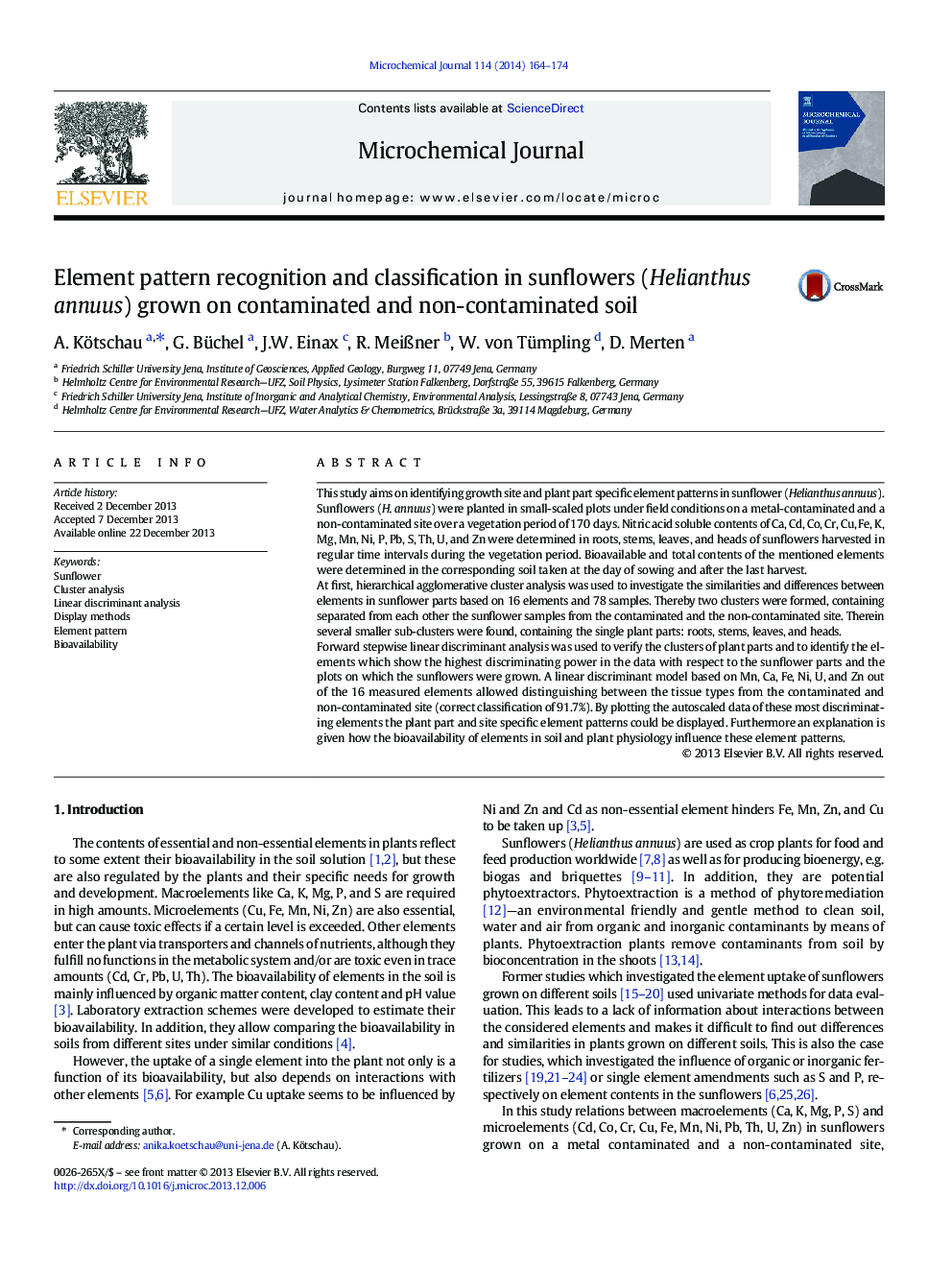| Article ID | Journal | Published Year | Pages | File Type |
|---|---|---|---|---|
| 7643274 | Microchemical Journal | 2014 | 11 Pages |
Abstract
Forward stepwise linear discriminant analysis was used to verify the clusters of plant parts and to identify the elements which show the highest discriminating power in the data with respect to the sunflower parts and the plots on which the sunflowers were grown. A linear discriminant model based on Mn, Ca, Fe, Ni, U, and Zn out of the 16 measured elements allowed distinguishing between the tissue types from the contaminated and non-contaminated site (correct classification of 91.7%). By plotting the autoscaled data of these most discriminating elements the plant part and site specific element patterns could be displayed. Furthermore an explanation is given how the bioavailability of elements in soil and plant physiology influence these element patterns.
Related Topics
Physical Sciences and Engineering
Chemistry
Analytical Chemistry
Authors
A. Kötschau, G. Büchel, J.W. Einax, R. MeiÃner, W. von Tümpling, D. Merten,
